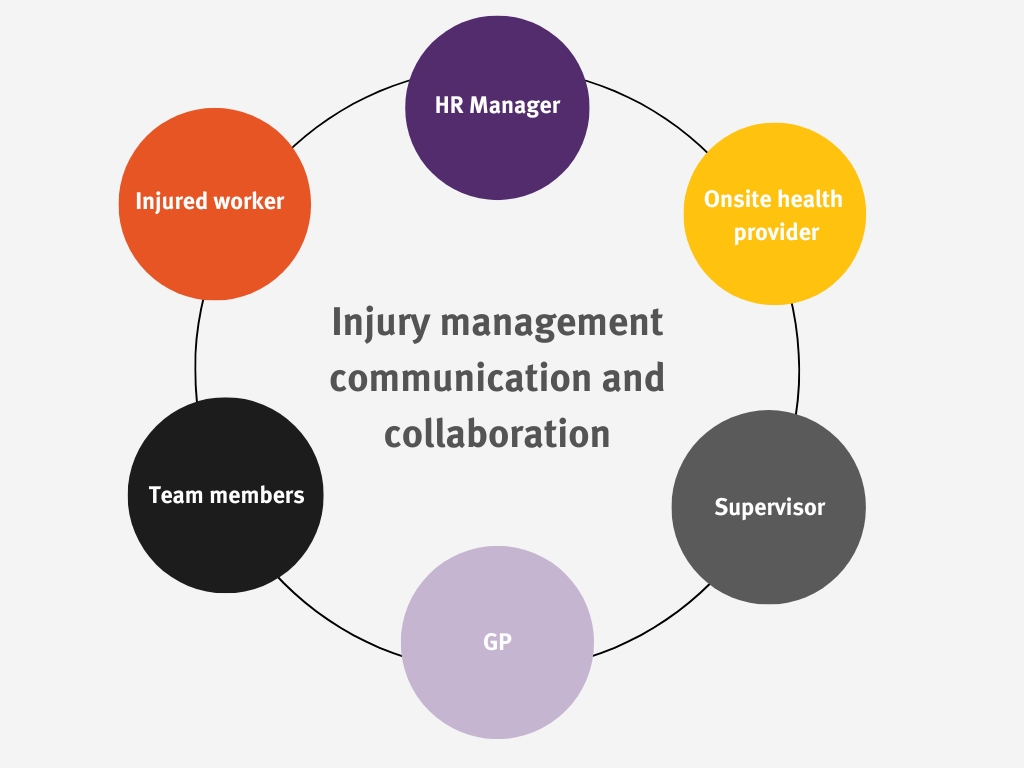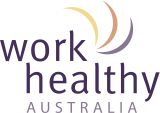
Make a list of the GP clinics close to your workplace and contact them to establish whether they are open to receiving workers and how they operate
Communication is the backbone of effective workplace health and safety management. It ensures that everyone involved is informed, aligned, and working together towards the common goal of a safe and healthy work environment.
Unfortunately, good communication doesn’t always happen in occupational health and safety. According to Comcare’s collaborative 2020 report, Principles on the role of the GP in supporting work participation, there is often “limited communication between stakeholders, contributing to confusion and misalignment of effort”.
Miscommunication or lack of communication can cost employers time and money and, worst, derail early intervention and injury management plans. A GP or health professional who does not know your workplace environment and is unaware of suitable light duties for certain roles could easily nominate a worker incapacitated rather than assigning them to light duties after a musculoskeletal complaint.
Comcare developed a set or core capabilities for supervisors, managers and rehabilitation case managers which reiterates communication as a critical skill. They emphasise the need to “cultivate open, honest and transparent communication with employees and key stakeholders in the return to work process” .

Benefits of communication
Communication and collaboration between onsite health providers, supervisors/managers, injured workers, treating GPs and other healthcare clinicians provides many benefits:
- Helps the implementation of a proactive injury management program
- Helps in creating a cohesive treatment and rehabilitation plan that considers the workers’ specific job requirements and health needs
- Allows for adjustments to rehabilitation plans, based on the worker’s progress, ensuring recover is on track and any issues are addressed quickly
- Builds trust and provides emotional support to injured workers, which can be crucial for their recovery and wellbeing
- Ensures all parties are following workplace policies and legal requirements
- Helps better return to work outcomes
Tips for working with your GP
1- Make contact
Make a list of the GP clinics close to your workplace and contact them to establish whether they are open to receiving workers and how they operate. Once you have identified a suitable GP and clinic, indicate your organisation is interested in sending injured workers to the clinic and having an ongoing relationship.
2- Educate
Ask if you can provide a list of light duties or task analysis/physical demands to the GP, so they have informed options when writing certificate of capacity for injured workers.
3- Introduce
Go with an injured worker to GP clinic to liaise with the doctor in person. Attending the intial appointment with the injured worker has many benefits: it shows the worker that you are on their side, providing support for their recovery, and also assists in the communication with the GP, as you can clarify information about the workplace.
4- Discuss
Call and discuss light duty options with the doctor. If the doctor is obliging, this can save a lot of money and keep people in work and engaged. Getting people back to work as soon as it’s safe to do so can help in recovery from injury and illness.

Tips for communicating with workers
Working well with your GP and health professionals is only one component of safety communication. You also need to communicate effectively with your workers.
Comcare highlights communication between supervisors and workers as key to good work design: “As a manager or supervisor, communicating openly with your employees builds trust, makes them feel valued and provides opportunities to express views and raise issues.” So what can you do?
1- Listen
Listen with the intent to understand your worker, rather than judge or force your perspective. Empathetic listening helps build open communication and trust.
2- Use simple language
Workers who have not been through the injury management process ae unlikely to understand terminology such as: LTI, MSD, HSR. Use the full term and when appropriate, explain it or use simpler language.
3- Support CALD workers
Provide language support for CALD (culturally and linguistically diverse) workers by using bilingual staff or providing interpreters. According to Safe Work Australia, “workers from culturally and linguistically diverse (CALD) backgrounds and migrant workers can be at increased risk of harm at work due to ineffective communication.” Using visuals and investing in cultural training are some strategies that can facilitate multicultural communication in workplaces.
4- Empower
Safe Work Australia encourages employers to “where possible use positive, supportive and empathetic language when communicating directly with workers.” Empowering language focusses on what workers can do, is positive and supportive.
5 – Keep your team in the loop
Gossip and rumours can fester quickly when there’s lack of communication. Will a worker’s injury or absence from work impact on the team and their workload? Keep workers informed about injuries, hazards and workplace risks whilst maintaining appropriate confidentiality of individuals’ health and injuries.
“As a manager or supervisor, communicating openly with your employees builds trust, makes them feel valued and provides opportunities to express views and raise issues.”
By fostering open and transparent dialogue among all stakeholders—healthcare providers, managers, injured workers, and supervisors—we can create a more supportive environment that prioritises recovery, minimises confusion, and promotes overall workplace health and safety.
References
Effective Communication. Comcare
Supervisor Core Capabilities. Comcare
More resources for effective safety communication and collaboration
Sign up to our monthly enewsletter
"*" indicates required fields



